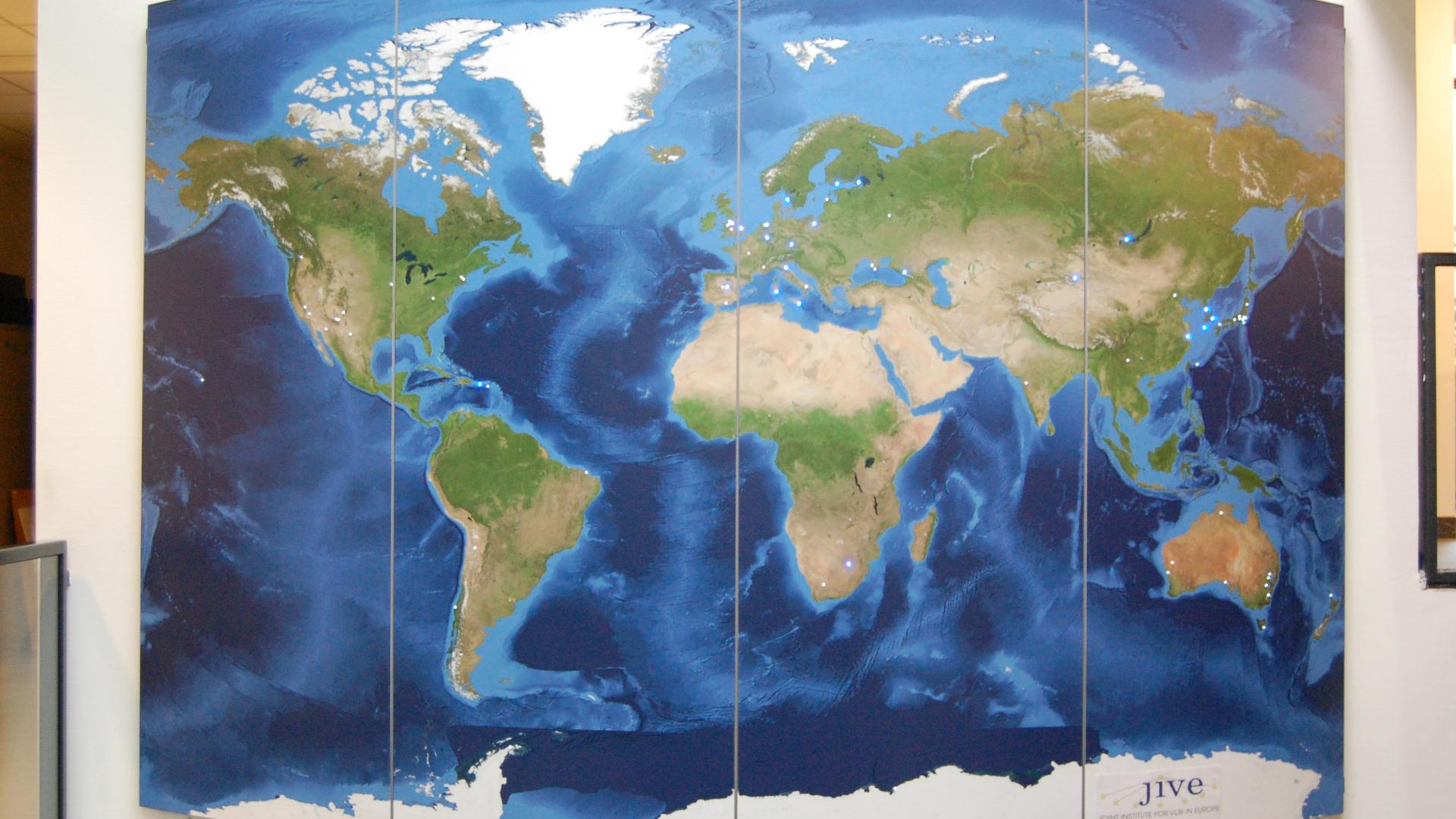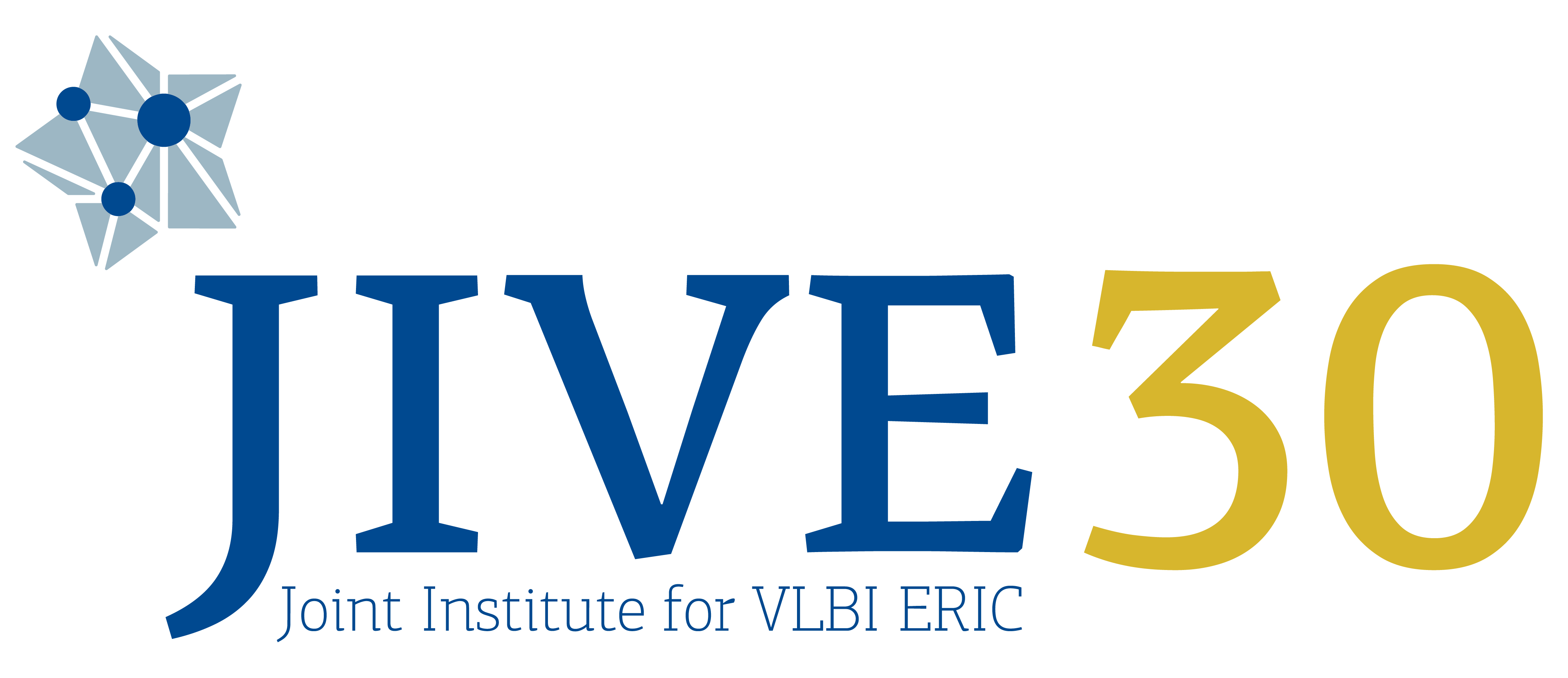What is e-VLBI?
e-VLBI, or electronic Very Long Baseline Interferometry, uses fibre optic networks to connect radio telescopes to a central data processor, which correlates the data from the telescopes in real-time. The astronomers can inspect their results almost immediately. In classic VLBI the data are recorded on disks and shipped to the correlator for processing, which can take weeks.
e-VLBI is the obvious choice for studying transient events such as supernova explosions and gamma-ray bursts; follow-on observations can be triggered in time, also in other spectral regions. But e-VLBI is not only quicker, it is also easier to organize once the procedures are clear. So, it could become the standard way of doing VLBI.

JIVE and e-VLBI
Through the EXPReS project (2006-2009), the EVN correlator at JIVE was upgraded for e-VLBI operations, up to 16 telescopes at a time, 1 Gb/s from each telescope; the same capacity as for classic VLBI. As a result of these upgrades, the EVN now offers regularly scheduled e-VLBI sessions, as well as opportunities for target-of-opportunity observations.
The NEXPRes project (2010-2013), also coordinated by JIVE, addressed the existing bottlenecks of e-VLBI which prevented it from being used for all EVN observations. Among other activities, NEXPReS developed high-speed recording/transmitting capabilities which now allow for data re-correlation and remove the distinction between disk-based and electronic VLBI.
For more information about JIVE's contributions to the development of e-VLBI, watch JIVE: Forging a Path to the Future of Radio Astronomy (15 minutes, 387 MB mp4, best viewed with VLC).
e-VLBI Progress
The following links provide some information about the current e-VLBI capabilities and status.
